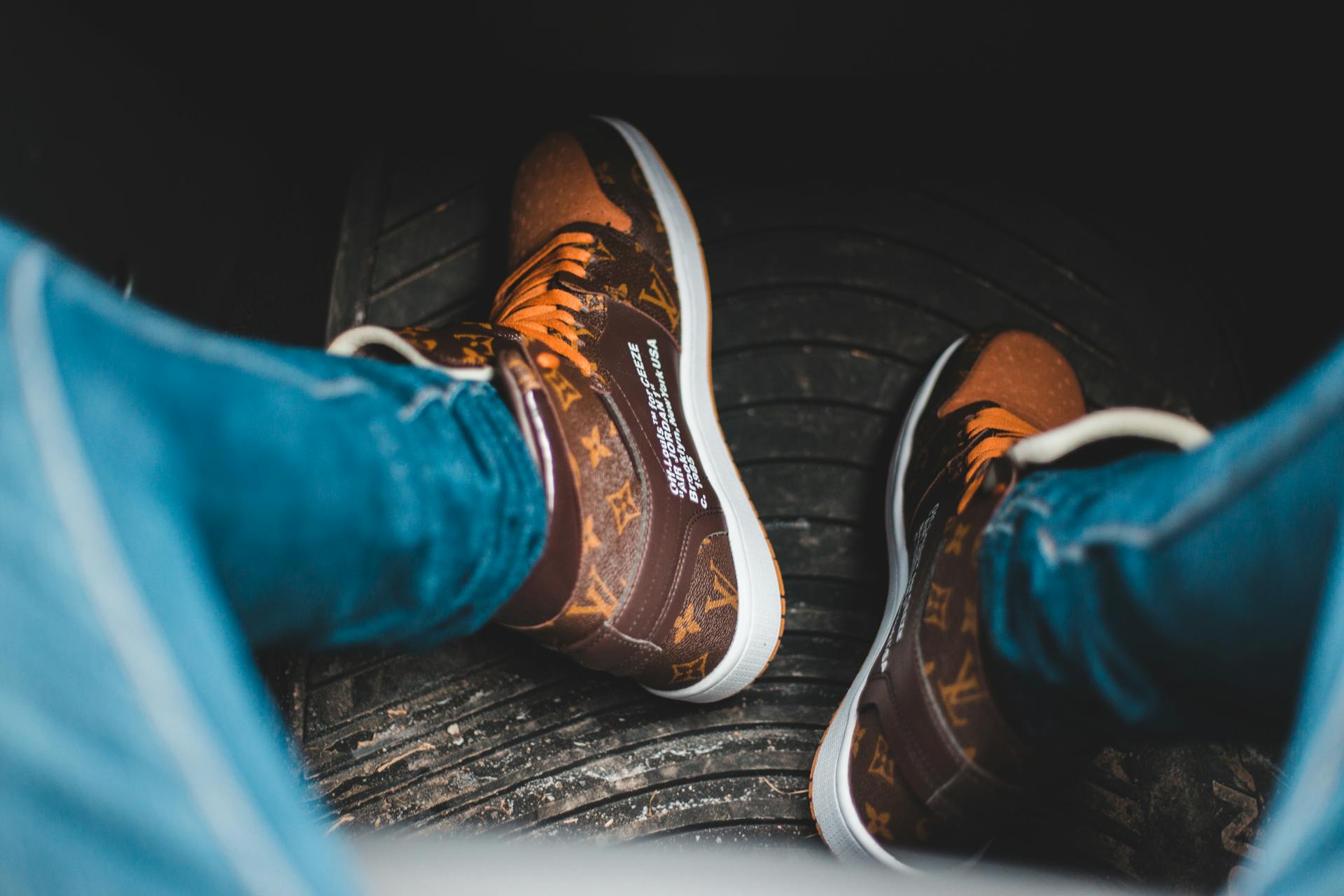
Regenerative agriculture and sustainable fashion are two buzzwords that have been making waves in recent times. The good news is that they are not just empty terms thrown around to sound cool; they represent a real shift towards a more sustainable future. In this blog post, we will explore how regenerative agriculture promises to have a big impact on the fashion industry and the way clothing manufacturing is carried out.
Regenerative agriculture is an approach to farming that goes beyond sustainability. It involves practices that improve soil health, increase biodiversity, and promote carbon sequestration. Unlike conventional farming methods that often rely on pesticides and synthetic fertilizers, regenerative agriculture takes a holistic approach to land management. By mimicking natural ecosystems, farmers can regenerate the soil and create healthier landscapes.
The fashion industry has long been criticized for its negative impact on the environment, but there is hope that regenerative agriculture could be the solution. As an eco hub of sorts, sustainable brands are increasingly turning to independently review regenerative farming practices as a way to reduce their environmental footprint. And while some may argue that these changes come at a cost, it's worth noting that affiliate links and small commissions can be used to learn more about regenerative agriculture and support farmers who are adopting these practices.
Readers also liked: Worst Fast Fashion Brands
What is Regenerative Agriculture?
Regenerative agriculture is an easy concept to understand. It involves managing land in a way that restores natural resource functions and improves the health of soil. Some practices include planting perennial crops, which reduce soil erosion and are able to withstand harsh weather better than annual crops. Carbon is stored underground, reducing carbon emissions released into the atmosphere.
Farmers utilize ecological principles in their practices based on a holistic environmentally friendly approach. By increasing biodiversity and welcoming natural predators, they can control pests while boosting pollinator populations. In February, Noble Research Institute defined regenerative agriculture as a system that focuses on restoring degraded soils by using practices such as crop rotation, conservation tillage, cover crops and grazing management.
Regenerative agriculture stems from the need to remedy healthy crops for eco-friendly clothing material. Dear Watson, even environmentalists decades ago saw the potential of regenerative fashion being not just an amusement but also a way to find ways to live holistically with nature. Major brands like North Face and Allbirds have invested heavily in regenerative fashion by using large sums of money for premium organic cotton grown by regenerative farmers. As sustainable fashion brands slowly begin taking an environmental approach to fast fashion, consumers can trust that they are getting the highest quality eco-friendly materials available today- endorsed even by fashion icon Stella McCartney - the vegan fashionista herself!
If this caught your attention, see: Nylon Eco Friendly Sustainable Fabric
1. How does Regenerative Agriculture apply to the fashion industry?
Regenerative agriculture is strongly rooted in providing sustainable and biodegradable resources for the fashion industry. By sourcing soil ethically sourced fibers, regenerative agriculture can offer useable materials to today's fashion brands and multiple small-owned fashion businesses alike. Climate change has made it clear that systemic change is needed within the fashion industry, and regenerative agriculture offers a small act with significant impact by supplying organically grown and naturally dyed materials.
Suggestion: Sustainable and Ethical Fashion
2. Why does Regenerative Fashion Matter?
Regenerative fashion is all about producing clothing in a way that doesn't cause total destruction to our planet. With an outstanding carbon footprint, conventional slow fashion and linear regenerative practices contribute greatly to the problem of climate change. Choosing circular and regenerative fashion can help us fight against this issue in small ways. The clothing produced through these methods has a much lower environmental impact, which means that you can feel good about what you're wearing.
Eileen Fisher, Hall VP Sustainability at EILEEN FISHER, and founder/president of ImpactorumFashion state that style and fashion are intimately connected to the impact we have on the environment. Human beings have the power to make a difference by choosing regenerative fashion options over conventional ones. By doing so, we give ourselves and our planet a fighting chance for a healthier future.
A fresh viewpoint: Clothing Swap Party
Regenerative Agriculture is a Sustainable, Ethical Way To Help Transform the Fashion Industry
Regenerative agriculture is a farming technique that focuses on rebuilding soil health, increasing biodiversity, and sequestering carbon. This approach to agriculture has gained recognition as a sustainable way of producing food, but it also has significant implications for the fashion industry. By using regenerative practices to grow sustainable materials like cotton and hemp, clothing manufacturers can reduce their ecological footprint while supporting ethical farming practices.
In addition to regeneration international, many large companies are starting to adopt regenerative fashion practices called care. These practices involve sourcing ethically-sourced materials knowing that they were created using regenerative agriculture techniques. By doing so, these companies are making a commitment to reducing their impact on climate change and creating more environmentally-friendly products.
Wearing clothes made from sustainable materials is just one way consumers can support regenerative fashion. They can also put thought into their everyday attire by choosing reusable bags or supporting brands that use regenerative farming techniques. With the world's environmental challenges progressively worse day by day, this post helpful in showing how small actions can make a big impact in transforming the fashion industry into a more sustainable entity.
Worth a look: Is Fish Farming Sustainable
Where Can I Find Regenerative Fashion Products?

Are you looking for regenerative fashion products but don't know where to start? Look no further than your own backyard! New York City is home to beautiful brands that offer ethically sourced products made with practicing regenerative fashion standards. If you're unsure where to start, a simple Google search can help you find these amazing companies.
One great certification to look for is the Global Organic Textile Standards (GOTS), which verifies the organic status of clothing. Another certification to keep an eye out for is Cradle 2 Cradle, which focuses on certifying clothing that is reusable, recyclable, biodegradable, and has high water efficiency and quality.
By supporting these environmentally friendly and socially responsible fashion revolutionaries, we can help create a more sustainable future while looking great doing it!
On a similar theme: Recycled and Upcycled Clothing
1. How Do I Know When a Fiber is Regenerative?
Regenerative fibers are those that come from regenerative agriculture practices, which aim to revitalize the soil and promote biodiversity. It can be hard to identify these fibers with the bare human eye, but there are ways to ensure you're buying sustainable materials. One way is to look for certifications from nonprofit organizations based in sunny California, such as Fibershed or Climate Beneficial Wool Verified. These groups work to help individuals understand regenerative fibers and support carbon farming practices through research education events and partnerships with farmers.
Another way to know if a fiber is regenerative is by looking at how it was produced. Material produced using regenerative agriculture methods will have carbon sunk into the soil, making it climate beneficial wool verified. This means that it not only helps sustain healthy ecosystems but also supports the fight against climate change. By choosing these fibers, you're investing in a more sustainable fashion industry while supporting farmers' efforts to restore our planet's health.
2. Is There a Certification for Regenerative Products?
Yes, there is a certification for regenerative products. The Regenerative Organic Certified (ROC) program was established to give individuals concerned with the environment an assurance that the products they are buying are not only sustainable but also support regenerative practices. Brands supporting regenerative fashion can use the ROC label to indicate that their products meet certain environmental standards.
The ROC program is considered the international equivalent of the USDA organic certification but adds additional criteria such as animal welfare and soil health. It also requires passionate farmers, business leaders, and other stakeholders to come together to create a system that supports regenerative agriculture. By choosing ROC certified products, individuals can live free from worrying about environmental hardships and contribute to a better future for all.
Readers also liked: Environmental Sustainability
What environmental benefits does regenerative farming bring to the fashion industry?

Let's dive into the benefits regenerative farming brings to the fashion industry. One major benefit is the improvement of water quality. Dangerous pesticides brought by conventional farming practices can contaminate surface water, which affects not only human health but also aquatic life. Regenerative farming enhances biodiversity and increases soil fertility naturally, leading to higher quality water for both humans and nature.
Regenerative farming also increases stronger bonds developed between plant species diversity, creating a healthier ecosystem that supports a variety of wildlife. The World Economic Forum mentioned that regenerative agriculture is a rapidly growing sector due to the demand for sustainable materials in the fast-fashion industry. This powerful fibers improving farm profitability increasing crop resilience while reducing environmental impact.
As previously discussed, regenerative farming shows the highest quality material can be produced with socially economically and environmentally responsible methods. With a large number of grass pun materials available like bamboo, hemp, and flax, it's possible to grow sustainable materials for clothing without harming the environment. By choosing regeneratively farmed materials, we can create a better world for ourselves and future generations to come.
1. Is Regenerative Agriculture the Future of Sustainable Fashion?
Regenerative agriculture has become a buzzword in the sustainable fashion industry. It's a farming practice that focuses on restoring soil biodiversity, reducing environmental footprint, and improving the quality of surrounding areas. Many companies, like Northface, have joined the regenerative agriculture movement to reduce their carbon footprint and contribute positively to the agricultural sector.
Some people argue that regenerative agriculture is the future of sustainable fashion. The cotton industry is notorious for its intense cotton cultivation process that requires excessive amounts of water and pesticides. On the other hand, sheep farming for wool production is continuously booming in New Zealand due to its lower greenhouse gas emissions when compared to other meat industries. Moreover, sustainable fashion wool from regenerative agriculture practices can improve soil health and reduce negative environmental impacts while providing quality products.
A unique perspective: Organic Cotton
Discovering Brands Embracing Regenerative Practices

Brands turning to regenerative farming tactics are leading the way in sustainable fashion. By using farming techniques that improve soil health, these brands are not only reducing their environmental impact but also creating clothing material that is more durable and long-lasting. Some of these regenerative practices include crop rotation, cover cropping, and reduced tillage. With consumers becoming increasingly aware of the environmental impact of fast fashion, it's no surprise that more and more brands are embracing these regenerative practices to meet the demand for sustainable clothing options.
Frequently Asked Questions
Is fashion giving back to the Earth?
Fashion is not currently giving back to the Earth, as the industry is responsible for significant environmental damage through pollution and waste. However, there are efforts being made by some brands to become more sustainable and reduce their impact on the planet.
What are the benefits of regenerative agriculture?
Regenerative agriculture improves soil health, increases biodiversity, reduces carbon emissions, and can lead to higher yields and profits for farmers. It also helps to create a more sustainable and resilient food system.
Is regenerative farming expensive?
Regenerative farming can be costly to implement initially, but over time it can result in cost savings and higher yields due to healthier soil and reduced need for expensive inputs like fertilizers and pesticides.
Are fashion brands partnering with regenerative cotton farms?
Yes, many fashion brands are partnering with regenerative cotton farms to promote sustainable and eco-friendly practices in the industry. These partnerships help reduce water usage, prevent soil degradation, and support local communities.
Is regenerative agriculture a sustainable future for clothing manufacturing?
Regenerative agriculture has the potential to be a sustainable future for clothing manufacturing as it prioritizes soil health, biodiversity, and carbon sequestration. However, it requires significant investment and widespread adoption to make a meaningful impact on the fashion industry's environmental impact.
Featured Images: pexels.com


